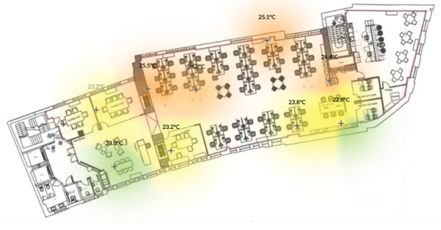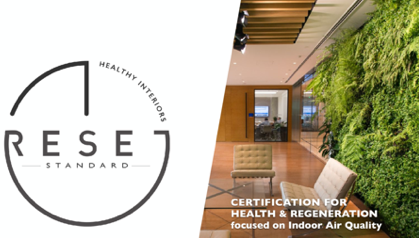The smart building aspects of PropTech have great potential to vastly improve the performance of buildings. Sensors and data, driven from smart buildings will provide the granularity of insight to support new and innovative approaches how buildings operate.
Carbon Credentials believes that one of the big opportunities that come from smart building PropTech improvements, is in how comfort and wellbeing is monitored and optimised.
Leaders in this space will improve the productive performance of workplaces, producing better quality work environments, which are attractive to tenants and their staff.
Managing temperature zoning for improved thermal comfort
Smart buildings will blend data from connected building sensors and existing building management (BMS) data to provide a detailed picture of thermal comfort for occupiers. BMS data includes settings for air flows, which control temperature and comfort.
Management of these air flows directly affects occupant comfort, and for this reason BMS data can be a vital tool for making spaces more comfortable, productive workplaces.
Especially in an open plan office environment, where the distribution of temperature can vary greatly, particularly depending on how air flows through it.

Being able to measure temperature distribution, can explain a lot of important comfort issues. For example, a common problem in offices is the actual office fit-out. This will often interfere with the air flow strategy, causing hot and cold zones in open areas and poorly ventilated meeting rooms.
Measuring the temperature distribution within these spaces can provide insight into what is causing the temperature discrepancies and can provide suggestions into how improvements can be made.
BMS data can show the trade-offs between air-flow and energy performance. Managed properly, BMS data analytics should be able to tune building spaces for efficiency of energy use – providing the best quality within a given space strategy.
Most importantly, the space strategy can be the product of actual data, and decisions around trade-offs can be understood through actual numbers.
Managing Indoor Air Quality for Better Health
Air flows affect occupant comfort, and can also affect occupant health.
Indoor air quality is a rising issue, and increasingly, members of the public are developing the understanding and the tools to be able to identify poor air quality and unproductive environments.
Poor Indoor Air Quality can introduce toxins to the air in the workplace. While people clearly understand the implications of drinking dirty water, breathing dirty air is less understood.

There is rapidly growing interest in this topic; certifications such as RESET Air help draw awareness to this as a specific topic, or the Well Standard include Indoor Air Quality as a core theme.
These programmes, alongside policy decisions such as the Air Quality aspect of the Mayor of London’s Environmental Plan, mixed with the proliferation of inexpensive sensors, means that interest in Indoor Air Quality will only grow.
Smart buildings can allow building owners to understand and avoid Indoor Air Quality issues and develop clear narratives which will appeal to health conscious tenants.
When measured and run correctly PropTech in smart buildings can decrease building operation costs whilst improving overall tenant comfort and health. Which in turn, increases productivity, whilst reducing complaints and tenant turnover.
This article is written by Sam Carson, Director of Sustainability Innovation, Carbon Credentials.


